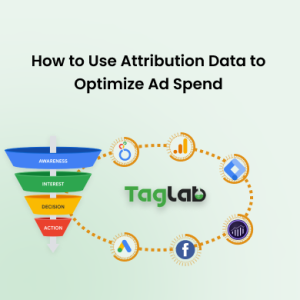Your cart is currently empty!
Marketing Mix Model ROI Metric Definition
Posted by:
|
On:
|
Marketing Mix Model (MMM) ROI measures the return on investment (ROI) by evaluating the effectiveness of various marketing channels and tactics within a comprehensive marketing mix. By attributing revenue and impact across multiple channels, MMM ROI provides businesses with insights into which marketing efforts deliver the best returns and how to allocate budget effectively.
Detailed Explanation
What is Marketing Mix Model ROI?
Marketing Mix Model (MMM) ROI represents the overall return generated from marketing activities by analyzing the contribution of each channel in a holistic marketing mix. Unlike single-channel attribution models, MMM takes into account the interaction and influence of various marketing channels, including offline media like TV, radio, and print, as well as online channels such as digital ads, social media, and email campaigns. This allows businesses to understand how different marketing tactics work together to drive revenue and optimize marketing investments.
How it Works?
MMM ROI is calculated by analyzing historical marketing and sales data to determine how each marketing channel and tactic contributes to overall sales and profitability. The ROI for each channel is then calculated based on the revenue it generates relative to its cost:
MMM ROI = (Revenue Attributed to the Marketing Mix / Total Marketing Spend) x 100
This metric helps businesses determine which marketing strategies are most effective and how to allocate their marketing budget to maximize returns.
Types of Marketing Mix Model Strategies for ROI
- Channel-Level ROI Attribution: Measures the ROI generated by individual channels within the marketing mix, such as TV ads, digital ads, or email marketing.
- Campaign-Level ROI Attribution: Focuses on calculating the ROI of specific campaigns that span multiple channels, helping businesses assess the impact of integrated marketing strategies.
- Media Mix Optimization: Uses ROI data from various channels to optimize the media mix and ensure that marketing dollars are spent on the most effective channels.
- Scenario Planning: MMM can also be used to predict the potential ROI of different marketing spend scenarios, allowing businesses to forecast the impact of shifting budget allocation across channels.
Illustrative Scenarios
Examples
- A consumer goods company uses MMM to analyze the effectiveness of its TV ads, digital ads, and social media campaigns. By evaluating the ROI of each channel, the company determines that digital ads deliver a 300% ROI, while TV ads provide a 150% ROI, helping the company decide to allocate more budget to digital channels.
- An automotive manufacturer uses MMM to evaluate the ROI of its integrated marketing campaign, which includes TV commercials, online video ads, and email marketing. The analysis shows that email marketing provides the highest ROI at 250%, followed by TV ads at 200% and online video ads at 180%, guiding the company’s future media mix.
Segmentation
MMM ROI can be segmented by channel, campaign, or customer demographics to provide deeper insights into which marketing tactics work best for specific audience segments or under different conditions. For example, businesses may find that younger audiences respond better to digital ads, while older audiences are more influenced by TV ads.
Factors Influencing Marketing Mix Model ROI
- Channel Effectiveness: The effectiveness of each marketing channel within the mix plays a significant role in determining the overall ROI of the marketing strategy.
- Synergy Between Channels: MMM considers the interaction between channels, recognizing that the combined effect of multiple channels may generate higher ROI than any single channel alone.
- External Factors: Economic conditions, seasonality, competitor activity, and other external factors can influence the effectiveness of marketing activities and impact the overall ROI.
- Data Quality: Accurate and comprehensive data is crucial for generating reliable ROI estimates. Poor data quality can lead to inaccurate ROI calculations and misguided marketing decisions.
- Budget Allocation: How well the marketing budget is allocated across channels affects the overall ROI of the marketing mix. Effective budget optimization is key to maximizing returns.
Strategies to Improve Marketing Mix Model ROI
- Invest in High-Performing Channels: Use MMM insights to identify the channels that deliver the highest ROI and allocate more budget to these channels for optimal results.
- Optimize Media Mix: Regularly evaluate the media mix to ensure that the right balance of offline and online channels is being used to reach the target audience effectively and maximize ROI.
- Use Data-Driven Decisions: Base marketing budget decisions on MMM data to ensure that investments are made in the channels and tactics that are proven to deliver the best returns.
- Test and Adjust Campaigns: Continuously test and refine campaigns across different channels to improve performance and increase the overall ROI of the marketing mix.
- Leverage Synergies Between Channels: Focus on strategies that enhance the synergy between channels, such as running integrated campaigns that combine online and offline marketing efforts for greater impact.
Benchmark Indicators
Understanding Marketing Mix Model ROI benchmarks by industry helps evaluate the effectiveness of multi-channel marketing strategies and set realistic goals for ROI improvement:
- Technology Industry: MMM ROI typically ranges from 200% to 350%, with digital ads and content marketing driving the highest returns in combination with traditional media like TV ads.
- Healthcare Industry: MMM ROI often ranges from 150% to 300%, with a mix of TV ads, radio, and digital campaigns contributing to overall revenue generation.
- Financial Services: MMM ROI generally falls between 250% and 400%, as integrated campaigns involving direct mail, TV ads, and digital marketing often work synergistically to drive returns.
- E-commerce: MMM ROI ranges from 250% to 500%, driven by a combination of search ads, retargeting, and social media, complemented by offline media like TV or print.
- Education Sector: MMM ROI can vary from 150% to 250%, influenced by digital advertising, radio, and content marketing, with a focus on lead generation and enrollment.
- Real Estate: MMM ROI often ranges between 200% and 350%, with successful campaigns leveraging a mix of digital marketing, direct mail, and traditional media like radio or TV ads.
Tools for Measuring Marketing Mix Model ROI
- Marketing Mix Modeling Platforms: Tools like Nielsen, Analytic Partners, and Neustar MarketShare help businesses analyze the effectiveness of their marketing mix and calculate ROI across channels.
- Data Analytics Tools: Platforms like Google Analytics and Adobe Analytics can be used to collect and analyze channel-level data for integration into MMM models.
- Business Intelligence Tools: Platforms like Tableau and Looker Studio can visualize MMM data, allowing businesses to make informed decisions about budget allocation and media mix optimization.
Common Pitfalls and Mistakes
- Relying on Limited Data: Incomplete or inaccurate data can lead to incorrect ROI calculations, resulting in misguided marketing decisions. Businesses should ensure they have comprehensive, high-quality data for analysis.
- Ignoring Synergies Between Channels: Failing to account for the interaction between channels can lead to an underestimation of the ROI generated by the entire marketing mix.
- Overemphasizing Short-Term Results: Focusing solely on short-term ROI can result in underinvestment in long-term brand-building activities, such as TV ads or content marketing, that drive sustainable growth over time.
- Not Adjusting the Media Mix: Sticking to a fixed media mix without regularly evaluating performance can lead to inefficient budget allocation and lower ROI. Continuous optimization is key to maximizing returns.
- Neglecting External Factors: Failing to consider external factors like seasonality, economic conditions, or competitor activity can distort MMM ROI calculations and lead to incorrect conclusions.
Frequently Asked Questions
What is Marketing Mix Model ROI?
Marketing Mix Model (MMM) ROI measures the return on investment generated by evaluating the effectiveness of multiple marketing channels and tactics in a comprehensive marketing mix, providing insights into how to allocate budget for optimal returns.
Why is Marketing Mix Model ROI important?
MMM ROI is important because it helps businesses understand the impact of their overall marketing strategy, evaluate the contribution of each channel, and optimize their media mix to generate the highest returns on investment.
How can I improve Marketing Mix Model ROI?
To improve MMM ROI, businesses should invest in high-performing channels, optimize their media mix, use data-driven decisions, continuously test and adjust campaigns, and leverage synergies between channels.
What factors influence Marketing Mix Model ROI?
Factors influencing MMM ROI include channel effectiveness, synergies between channels, external factors like seasonality, data quality, and budget allocation.
What are good benchmarks for Marketing Mix Model ROI?
Good benchmarks for MMM ROI vary by industry, with rates above 350% considered excellent, while rates below 150% indicate a need for improvement.



